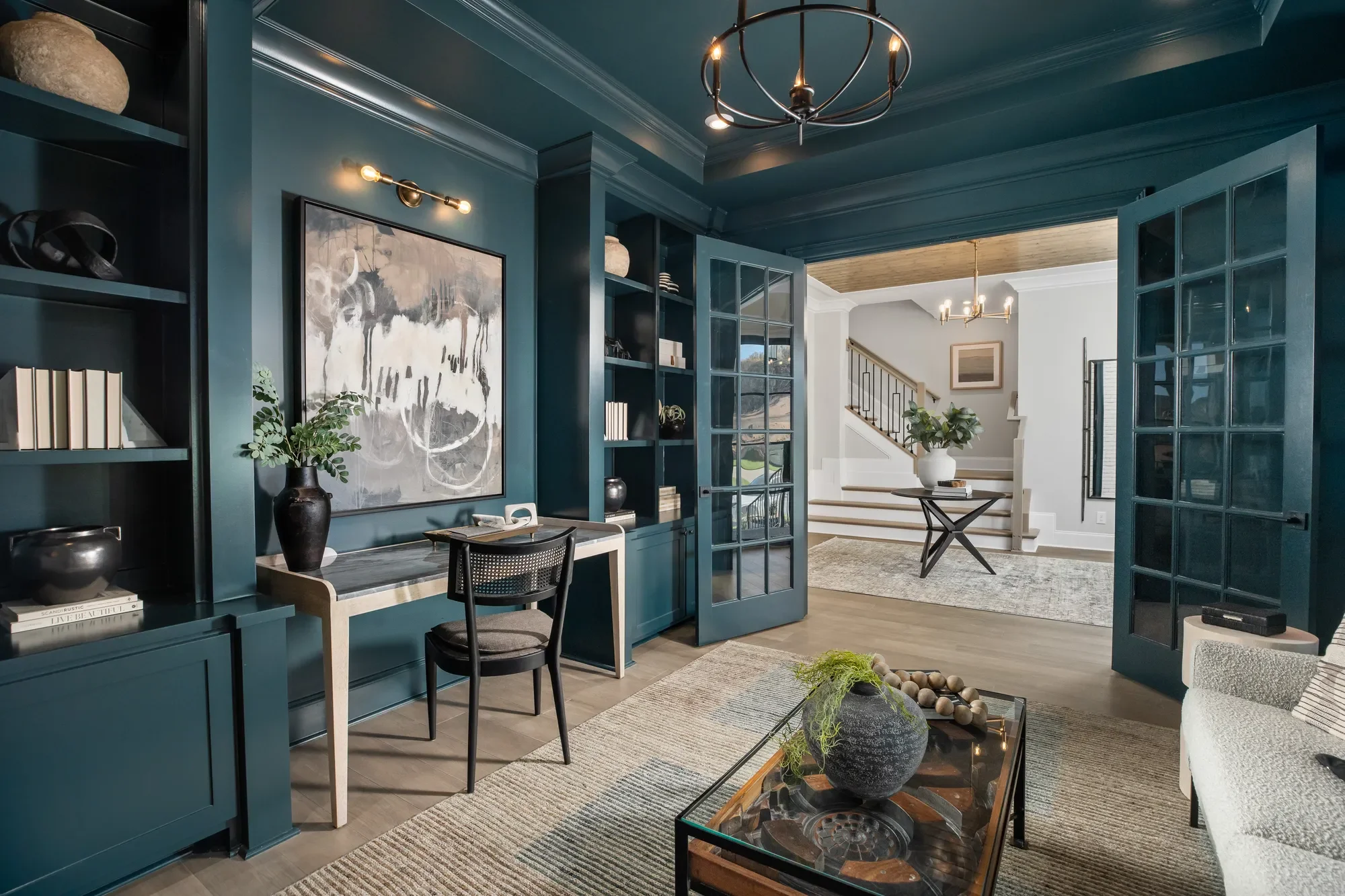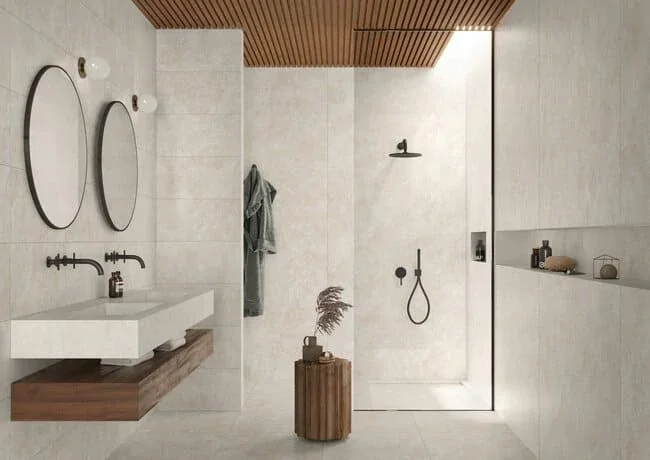Textured Ceilings & Wood Drenching: The Surfaces Trend You Didn’t See Coming!
Because flat walls and white ceilings are officially over.
For years, walls did the heavy lifting in design — paint colors, art, texture. But lately, something fascinating has happened: the entire envelope of the room has become the canvas. Designers are turning their attention upward and outward, embracing textured ceilings, wall treatments, and a phenomenon known as “color, wood, tile or stone drenching” — wrapping a space in the same tone or material for a dramatic, cocooning effect.
Let’s unpack why this look is everywhere right now — and how to bring it home (without a total renovation).
1. The Rise of the Fifth Wall
We used to ignore ceilings — paint them white and move on. But in 2025, they’re stealing the spotlight.
Designers are experimenting with wallpapered ceilings, limewash texture, paneled beams, and even color-saturated ceilings that match or contrast with the walls.
“It’s about creating visual intimacy,” says one designer on Houzz. “A ceiling treatment can instantly make a room feel finished and intentional.”
Try this at home:
In a bedroom or dining room, paint the ceiling the same color as your walls for a cozy, enveloped feel also known as “color drenching”.
For a bolder approach, use a slightly darker shade or a contrasting color to add depth.
Want drama? Try a patterned wallpaper overhead — grass cloth or geometric prints are trending.
Image credit DreesHomes
2. What Is “Wood Drenching”?
If color drenching took over last year, wood drenching is its warmer, earthier cousin.
The concept: use wood — on walls, ceilings, cabinetry, even trim — in a unified tone. Think Scandi sauna meets California cool.
This creates an immediate sense of calm and cohesion, especially when paired with minimalist furniture or soft upholstery.
Where it works best:
Entryways — a paneled wood ceiling can turn a pass-through into a design moment.
Bathrooms — cedar slats add warmth and spa vibes.
Living rooms — tone-on-tone oak or walnut adds luxury without clutter.
Pro tip: mix grain directions (vertical on walls, horizontal on ceiling) for subtle visual movement.
3. Texture as the New Luxury
The new definition of luxury isn’t shiny or ornate — it’s tactile.
Limewash plaster, raked wood, rough stone — these surfaces photograph beautifully and feel grounding in real life.
Textured finishes help break the monotony of smooth drywall, absorbing light differently throughout the day and adding emotional warmth.
Budget-friendly ways to bring in texture:
Limewash or Roman clay paint for walls (try Portola Paints or Color Atelier).
Peel-and-stick wood panels or fluted MDF for an easy weekend project.
Fabric-wrapped walls in small spaces like powder rooms or headboard walls.
4. How to Balance Texture Without Overdoing It
A fully drenched room is stunning — but too much texture can feel heavy.
Here’s how to strike the right balance:
✅ Vary the sheen: matte limewash + glossy trim = depth.
✅ Keep the palette restrained: limit to 2–3 natural tones.
✅ Add soft counterpoints: linen drapes, curved furniture, plush rugs.
✅ Layer lighting: textured surfaces come alive under warm, directional light.
5. Why It Works Emotionally
Humans crave sensory richness — it’s the antidote to digital fatigue and sterile minimalism.
When a room surrounds you in texture, your nervous system relaxes. That’s why this trend feels so right now: it’s a visual exhale.
Texture is the new color. When you layer natural materials — wood, plaster, stone — you don’t just see the space differently. You feel it differently.
Final Thoughts
Textured ceilings and wood drenching are more than aesthetic statements, they’re about connection. Connection to craft, to nature, to the experience of being in a space, not just looking at it. So next time you plan a refresh, don’t stop at the walls. Look up, look around — your next design transformation might be hiding on the fifth wall.






